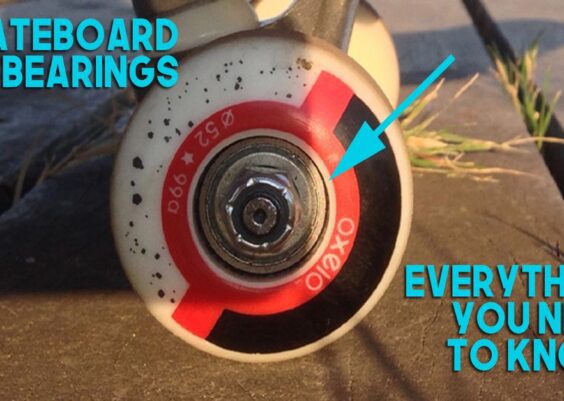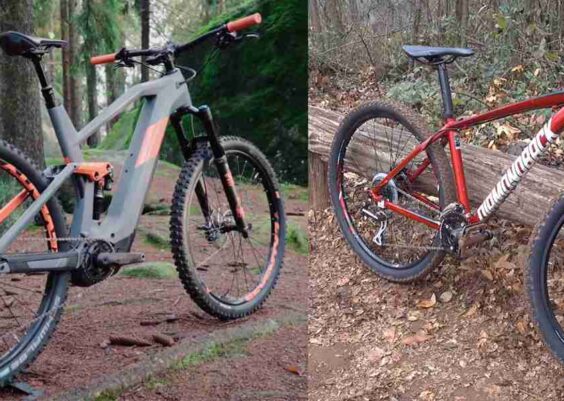Comprehending the knack of skateboarding is evidently a flimsy task. Lots and lots of practice and perseverance are needed to become a skilled skateboarder.
Those who are well versed in this sport know how important the size of the skateboard is. It is after all the deciding factor behind a perfect trick.
So while buying a skateboard you need to take into account all the various aspects like size of the deck, its length, width and shape of the board.
The only way for you to ensure safety and ease while skateboarding is by choosing the one which suits all your parameters.
There are varieties of skateboard depending upon their sizes like a longboard, shortboard, cruiser, etc.
But first, let's discuss some skateboard terminologies.

Deck
The deck part of the skateboard is the real board itself. The flat area of the board where you stand while skateboarding is known as the deck.
Although they vary in size, the average size of a skateboard deck (most of them) usually lies between 7"-10".
The factors on which the width of the deck depends the most are the built of the rider, and his/her riding style.
A heavy rider on vert or a skating ramp would go for the one which has a wide deck. On the other hand, a street skater would opt for a smaller deck.
Note:
Always choose your board by considering the width, not the length.
Board's Length
Every skateboard's length is measured from the tip of its nose till the very end of its tail. On average the length of a skateboard is anything between 28 - 32 inches.
Nose and Tail of a skateboard
It's hard to tell the difference between the nose and tail part of a skateboard because they are virtually similar in appearance.
Nevertheless, today's latest skateboards are equipped with graphics on their decks, which makes it easy for you to differentiate between the two ends.
Another feature that helps distinguish between the two is the kick.
In the majority of the skateboard decks, the nose region has a bigger kick, compared to the tail region which has a rather smoother kick.
Mounting Holes
Generally speaking there are 8 pre-drilled mounting holes (2 sets of 4 holes) present on each kick side of the board. In these holes, the trucks get fixed.
Wheelbase
The space that lies between the two pairs of mounting holes that are present on each side is known as the wheelbase.
The average distance is usually between 13-15 inches. Just like other factors, the wheelbase also depends upon the rider`s technique and skill set.
Follow These Tips: How To Ride Electric Skateboard: Top Tips For Riding Safely.
Ply (Layer)
When you observe the side of a skateboard deck, you can see that there are thin layers of wood is visible.
Commonly 7-9 plies (sing- ply) of hardwood are present in the majority of the high-end skateboard.
The reason behind layering in a typical cross-grained pattern is to ensure the potency of the board. Which a solid unit of wood can`t provide.
Concave
The longitudinal curve of the deck is known as concave.
The more elevated the curve is, the more pressure can be applied on your deck's edges. This, in turn, improves your navigation skills and allows you to flip your board with more ease.
They are typically differentiated as low, medium and high concave.
Different sizes of skateboard decks
If you are inexperienced in skateboarding then you should choose the deck based on width, instead of length or wheelbase.
Now the width, well that depends on your physical built, your skating technique and your personal inclination.
Below are some common guidelines for reference purpose:
Micro Deck
Mini Deck
Mid-size Deck
Full-size Deck
Note:
In Full-size deck the size depends upon skating technique, for instance:
Different types of skateboard
Shortboard
This is the shortest skateboard designed to perform tricks. Since 2002, Electric Skateboard has entered the market as well. They are easy and convenient to use.
Longboard
For someone who isn`t concerned with any skating tricks, the longboard is the ideal option. Just drive it around as a means of transportation.
Speaking of transportation, if you opt for an Electric Longboard your daily commute to work or college will surely become more interesting.
Cruiser
As the name suggests, this board is crafted just to cruise around. These mid-sized decks usually have kick tails.
Old-school
With kick tails and flat nose, these boards are often found to be asymmetrical. They are best suited for ramps and pools.
Worried About Skateboarding! Check Out: 8 Tips to Overcome Fear While Skateboarding.

Wrapping up
The health of your skateboard depends upon your skating frequency, so make sure your skateboard is in good condition without any split or crack.
In case you find some, then it’s time to replace the board.
Must Read This Article: Coronavirus Impact On Snow Sports.
Last updated on December 28th, 2021 at 12:11 pm




